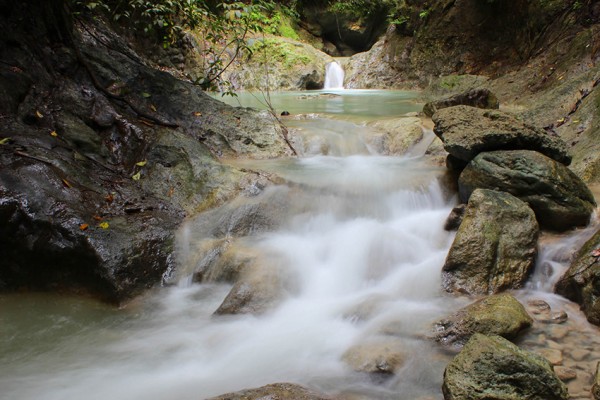New Mathematical Method Enhances Hydrology Simulations

Image courtesy of Storm Crypt (Flickr) via a Creative Commons License. Scientists have developed a new approach that uses sophisticated mathematical solutions to improve computational simulations of ecosystem water processes.
Just as a racecar's engine needs the right fuel to get the best performance, so climate models need finely tuned parameters to accurately simulate the impacts of different technologies and policies.
Led by researchers at Pacific Northwest National Laboratory, a team applied sophisticated mathematical solutions to fine tune the water and energy exchange parameters, numerical stand-ins for complex processes, to more accurately simulate water and energy fluxes in the Community Land Model under different climate and environmental conditions.
The Impact
Calibrating the water and energy exchange parameters significantly improved simulations compared to results using the default Community Land Model parameter values.
Summary
The exchange of water and energy between the atmosphere and land is among the most uncertain aspects of climate modeling. For example, when rain falls on land, the amount of water that evaporates back into the atmosphere or gets carried by groundwater to rivers and the ocean is unclear.
The answer to this and similar questions could be estimated using climate models, but these models have numerous variables or “parameters” that must be adjusted based on observations of different regions of the Earth. One way to adjust these parameters is to run the model repeatedly, each time changing the parameters individually until a solution that matches observations is found.
However, it is possible that a different set of solutions would also match observations. Researchers evaluated inversion methodologies at select field sites based on global sensitivity analyses. They found significant improvements in the model simulations that better match the observed heat flux and runoff by using the estimated parameters compared to using the default parameters.Improvements in heat flux were found especially in areas with strong energy and water constraints.
Funding
This work is supported by the Climate Science for a Sustainable Energy Future project funded by the U.S. Department of Energy (DOE) Office of Science through the Earth System Modeling Program. Pacific Northwest National Laboratory's (PNNL) Platform for Regional Integrated Modeling and Analysis (PRIMA) Initiative provided support for the model configuration and datasets used in the numerical experiments.
Additional support was provided by the National Science Foundation of China (NSFC51190092, 51222901) and the foundation of the State Key Laboratory of Hydroscience and Engineering of Tsinghua University (2012-KY-03).
Publication
Y. Sun, Z. Hou, M. Huang, F. Tian, and L.R. Leung,”Inverse modeling of hydrologic parameters using surface flux and runoff observations in the Community Land Model.” Hydrology and Earth System Sciences 17, 4995–5011 (2013). [DOI: 10.5194/hess-17-4995-2013].
Contact Information
Kristin Manke
kristin.manke@science.doe.gov
Media Contact
All latest news from the category: Ecology, The Environment and Conservation
This complex theme deals primarily with interactions between organisms and the environmental factors that impact them, but to a greater extent between individual inanimate environmental factors.
innovations-report offers informative reports and articles on topics such as climate protection, landscape conservation, ecological systems, wildlife and nature parks and ecosystem efficiency and balance.
Newest articles

First-of-its-kind study uses remote sensing to monitor plastic debris in rivers and lakes
Remote sensing creates a cost-effective solution to monitoring plastic pollution. A first-of-its-kind study from researchers at the University of Minnesota Twin Cities shows how remote sensing can help monitor and…

Laser-based artificial neuron mimics nerve cell functions at lightning speed
With a processing speed a billion times faster than nature, chip-based laser neuron could help advance AI tasks such as pattern recognition and sequence prediction. Researchers have developed a laser-based…

Optimising the processing of plastic waste
Just one look in the yellow bin reveals a colourful jumble of different types of plastic. However, the purer and more uniform plastic waste is, the easier it is to…



